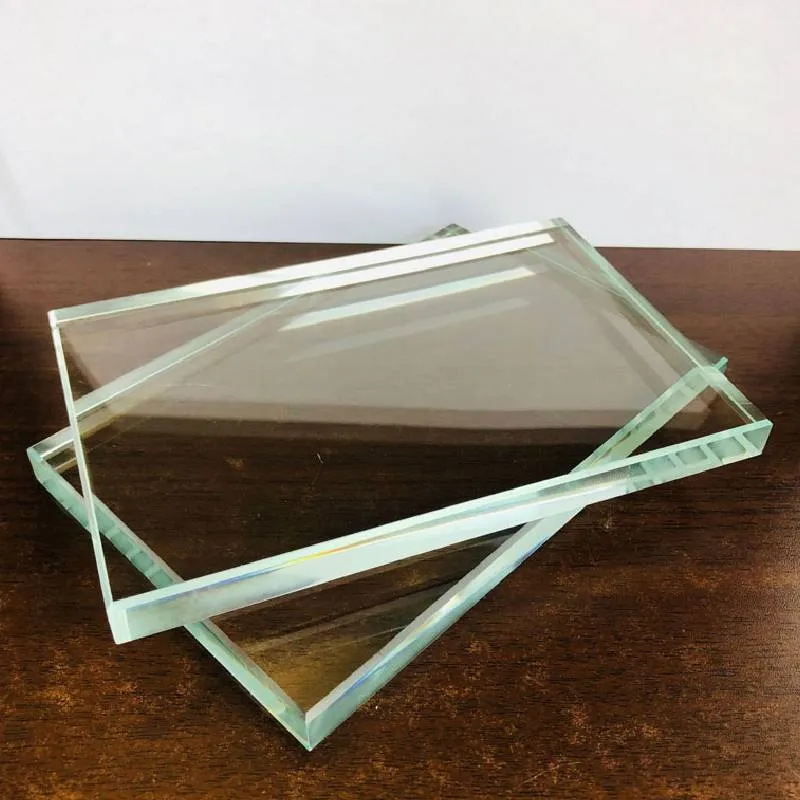Understanding Tempered Glass Sheet Pricing Factors and Market Trends
Tempered glass, also known as toughened glass, is a type of safety glass treated by processes of extreme heating and rapid cooling that increases its strength compared to normal glass. This unique manufacturing process makes it an ideal choice for various applications, including windows, doors, shower enclosures, glass doors, and facades. As demand for high-quality, durable materials grows, the price of tempered glass sheets has garnered considerable attention. In this article, we will explore the factors influencing the price of tempered glass sheets and current market trends that affect their affordability.
Key Factors Influencing Pricing
1. Manufacturing Process The nature of the tempered glass manufacturing process significantly impacts its cost. Unlike standard glass, the production of tempered glass involves intensive processes that require specialized equipment and technology. The glass is heated to over 600 degrees Celsius and then rapidly cooled, which necessitates advanced machinery. As a result, the energy and operational costs associated with production are transferred to the final product price.
2. Thickness and Size The size and thickness of tempered glass sheets are critical factors that impact pricing. Generally, thicker glass requires more raw material and a more substantial energy input during the manufacturing process, resulting in higher costs. Larger sheets may also entail increased logistical expenses for transport and handling. For example, prices can significantly vary between standard thicknesses, such as 6mm, 10mm, and 12mm.
3. Quality and Certification The quality of tempered glass is another vital component in pricing. Glass that meets stringent industry standards and certifications tends to be more expensive than lower-quality alternatives. Certifications like ANSI Z97.1 and CPSC 16 CFR 1201 ensure that the glass meets safety standards, contributing to its overall cost. Consumers are often willing to pay a premium for certified products, knowing they ensure durability and safety.
4. Market Demand and Supply Chain Dynamics The supply and demand equation plays a crucial role in determining the price of tempered glass sheets. Economic fluctuations, construction activity, and industry trends can lead to variances in demand. An increase in construction projects, for instance, may heighten the demand for tempered glass, subsequently driving up prices. Conversely, oversupply in the market can lead to a decrease in prices.
tempered glass sheet price
5. Geographical Location The geographical location of both suppliers and consumers can impact pricing. Regions with a high density of glass manufacturing facilities may enjoy lower prices due to decreased transportation costs. Conversely, locations that are far from manufacturing hubs may face increased shipping and handling charges that push prices higher.
Current Market Trends
In recent years, the tempered glass market has witnessed several notable trends that have influenced pricing. The rise of eco-friendly construction practices and sustainable building materials has driven an increase in demand for tempered glass products. As builders and homeowners alike prioritize energy-efficient and eco-friendly materials, the market for tempered glass has expanded, leading to fluctuations in prices accordingly.
Another trend is the increased use of tempered glass in the automotive industry. As modern vehicles adopt larger glass areas for aesthetics and visibility, tempered glass sheets are in higher demand for car windshields and windows. This growing market segment can affect the availability of tempered glass sheets and their corresponding prices in other industries.
Lastly, the impact of global supply chain issues, particularly post-COVID-19, has also played a significant role in tempered glass pricing. Disruptions in manufacturing and transportation caused by the pandemic led to supply shortages, which resulted in temporary price spikes. However, as the market stabilizes, these prices may begin to normalize.
Conclusion
Understanding the pricing of tempered glass sheets requires a comprehensive look at various influencing factors, including manufacturing processes, market demand, and geographical considerations. As trends continue to evolve, so too will the pricing landscape for tempered glass. Whether for construction, automotive, or design purposes, consumers must stay informed about market dynamics to make the best purchasing decisions. Ultimately, tempered glass remains a vital material, balancing cost-effectiveness with safety and durability in a range of applications.
 Afrikaans
Afrikaans  Albanian
Albanian  Amharic
Amharic  Arabic
Arabic  Armenian
Armenian  Azerbaijani
Azerbaijani  Basque
Basque  Belarusian
Belarusian  Bengali
Bengali  Bosnian
Bosnian  Bulgarian
Bulgarian  Catalan
Catalan  Cebuano
Cebuano  Corsican
Corsican  Croatian
Croatian  Czech
Czech  Danish
Danish  Dutch
Dutch  English
English  Esperanto
Esperanto  Estonian
Estonian  Finnish
Finnish  French
French  Frisian
Frisian  Galician
Galician  Georgian
Georgian  German
German  Greek
Greek  Gujarati
Gujarati  Haitian Creole
Haitian Creole  hausa
hausa  hawaiian
hawaiian  Hebrew
Hebrew  Hindi
Hindi  Miao
Miao  Hungarian
Hungarian  Icelandic
Icelandic  igbo
igbo  Indonesian
Indonesian  irish
irish  Italian
Italian  Japanese
Japanese  Javanese
Javanese  Kannada
Kannada  kazakh
kazakh  Khmer
Khmer  Rwandese
Rwandese  Korean
Korean  Kurdish
Kurdish  Kyrgyz
Kyrgyz  Lao
Lao  Latin
Latin  Latvian
Latvian  Lithuanian
Lithuanian  Luxembourgish
Luxembourgish  Macedonian
Macedonian  Malgashi
Malgashi  Malay
Malay  Malayalam
Malayalam  Maltese
Maltese  Maori
Maori  Marathi
Marathi  Mongolian
Mongolian  Myanmar
Myanmar  Nepali
Nepali  Norwegian
Norwegian  Norwegian
Norwegian  Occitan
Occitan  Pashto
Pashto  Persian
Persian  Polish
Polish  Portuguese
Portuguese  Punjabi
Punjabi  Romanian
Romanian  Russian
Russian  Samoan
Samoan  Scottish Gaelic
Scottish Gaelic  Serbian
Serbian  Sesotho
Sesotho  Shona
Shona  Sindhi
Sindhi  Sinhala
Sinhala  Slovak
Slovak  Slovenian
Slovenian  Somali
Somali  Spanish
Spanish  Sundanese
Sundanese  Swahili
Swahili  Swedish
Swedish  Tagalog
Tagalog  Tajik
Tajik  Tamil
Tamil  Tatar
Tatar  Telugu
Telugu  Thai
Thai  Turkish
Turkish  Turkmen
Turkmen  Ukrainian
Ukrainian  Urdu
Urdu  Uighur
Uighur  Uzbek
Uzbek  Vietnamese
Vietnamese  Welsh
Welsh  Bantu
Bantu  Yiddish
Yiddish  Yoruba
Yoruba  Zulu
Zulu 

